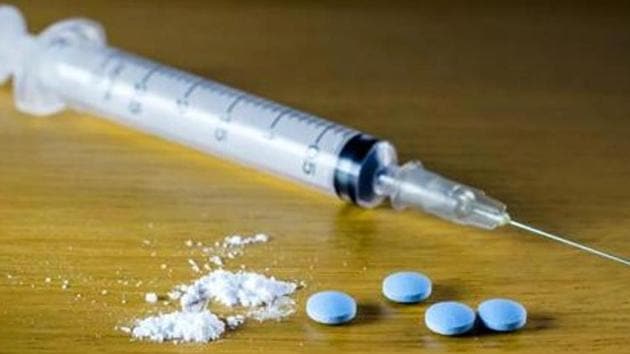Drug addiction up in Bihar after liquor ban
Figures made available by them for the year 2018-19 reveal that while in the last one year, only 365 addicts with a monthly salary of up to ₹5,000 came for de-addiction.
Drug addiction is pervading homes of the comparatively rich at a faster pace than the poor in Bihar. According to the findings of Patna’s popular Disha de-addiction cum-rehabilitation Centre, people with better economic status, especially those with a monthly income of more than ₹20,000 per month, are indulging in various kinds of addiction that include heroin/smack, alcohol, marijuana, charas, bhang, intravenous injections, inhaling whiteners and other adhesives.

Figures made available by them for the year 2018-19 reveal that while in the last one year, only 365 addicts with a monthly salary of up to ₹5,000 came for de-addiction, the number increased to 1,832 when it came to addicts with a monthly income between ₹5,000 to ₹20,000 who registered for the de-addiction program.
Worse was with those having monthly salary of more than ₹20,000. Disha’s data reveal that in the last one year 2,679 addictions of the above mentioned income group were registered with them for the de-addiction program. The figures sum up the trend that people in Patna with higher income are more likely to indulge in consuming addictives.
Rakhi Sharma, CEO of Disha De-addiction Centre, said, “After alcohol ban, the number of drug addicts in the state has increased. People are now opting alternative ways of intoxication including heroin, alcohol, Marijuana, injection, and others which causes prolonged mental illness. For curing the patient, it is necessary to find out the root cause of his depression and minimise it.”
“The major reasons for youth getting hooked to drugs could be peer-pressure, unhealthy working environment, failure in relationship or career, and many more. Support of family plays a vital role in successful rehabilitation and prevents relapse of the therapy,” she said.
The NGO officials said that addicts brought to them for de-addiction are from various age groups. A total of 792 cases were registered in which addicts were below 18 years, 1746 cases in which addicts were between 18 to 35 years and 2338 cases in which addicts were above 35 years.
The number of addicts above 35 years is three times more than teenagers. One reason that could be attributed to the trend is the financial independence the older ones enjoy over the teenagers.



